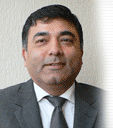

Mr Sahni, thanks for joining us on Face2Face talk. Firstly, from consultant and market analyst point of view, tell us with what lessons should textile, garment and retail industry head to next decade?
The single biggest lesson the T&A industry should head to be pay more attention to the domestic market. Indian domestic market for textile and apparel will at least double every 5 years and will offer significant opportunities for players to grow. The growth will come from current consumers buying more clothes, new consumers buying for the first time, consumers moving from textile to RTW buying, from unbranded to branded and to value added garments. The cumulative effect of all these factors will lead to unprecedented growth. I also believe that in many categories domestic market offers better realization per meter and going forward all categories will offer better yield in domestic market.
Like what you cited in your earlier comments, India recently is in talks of investors’ community figuring it to be the key economy globally. What are the factors?
The biggest and visible factor for investors’ community looking to invest in India is the 8% plus GDP growth at a time when major economies are shrinking or growing extremely slow. India along with China offers huge potential opportunities to invest, sell and make money for MNC firms and investors. The fundamental reason leading to this economic growth is the demographic dividend that India is reaping from its 55% population that is younger than 25 years of age, supported by the tax collections that Govt is pumping into social schemes like NREGA that is creating consumption at the poorest level, and then the investments by Private sector as well as by the Govt. in the infrastructure that is creating jobs as well consumption.
Retail in Apparel/Garments sector is getting redefined. What say?
Oh yes. From the textile being sold over the counter while standing out on the street in narrow lanes of crowded markets to consumers browsing through hangers of readymade garments in beautifully done up stores in multi storied air-conditioned malls, the apparel retail has covered a lot of distance in last 10 years. The changes seen in the last 10 years are unprecedented and future generations will remember the last decade as the real turning point in Indian apparel retail sector.
Amongst entire value chain for textile & clothing and allied industries (technical textiles), which segment is to grow strong in India?
I think both will grow really fast in next 20 to 30 years. However, the base of allied industries being small the % age growth would be higher while the apparel segment will be largest in absolute numbers.
‘Consultation’- some years ago was an outsourced activity for Indian companies. Over the recent years India is getting competent on this front too and companies like yours has a big role to play. Isn’t it?
Yes, you are right about this as most of the consulting firms were of international origin and the advice offered was generally alien to Indian companies, as the context wasn’t relevant. However, in the last 10 years, few Indian consulting firms have emerged and my belief is that in next 20 years, few Indian consulting firms will appear in the list of top 20 consulting firms in the world.
In the story, two years ago, Recession started playing villain for economy world over. Are things limping back to recovery?
The last financial crisis was of unbelievable level and had implications on every aspect of business around the world. No country, economy or business segment was left untouched. It impacted the consumption to the extent that major economies started shrinking. The good news is that the consumption is coming back and businesses are starting to hire and invest. I hope that 2011 will be the year of recovery overall.
Will there be onset of some new hybrid financial instruments that have led to recession in first place?
I am not an expert on financial instruments or even macro economics, but I am confident that the financial wiz kids will come up with something more innovative and creative, and world will continue to go through these cycles of boom and bust. The issue is not how to avoid the crisis from happening; the challenge is to recover quickly with least possible damage.
What shall be trends in growth of T&C companies –organic or inorganic?
In India, the trend will be mainly organic as we need lot more new capacities to come up for serving the growing demand. For Inorganic growth, there have be enough possibilities of acquisitions that I don’t see as of now. Most of the Indian textile companies have their own growth plans and aren’t looking at either buying others or selling their businesses. Inorganic options will emerge in a major way only in next 10 to 15 years.
#######
DISCLAIMER: All views and opinions expressed in this column are solely of the interviewee, and they do not reflect in any way the opinion of Fibre2Fashion.com.